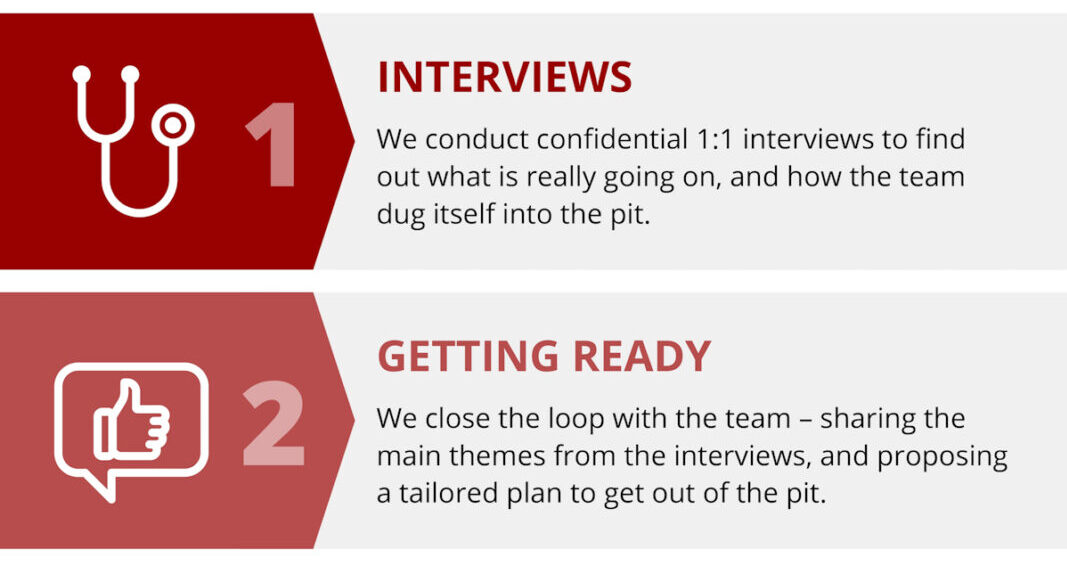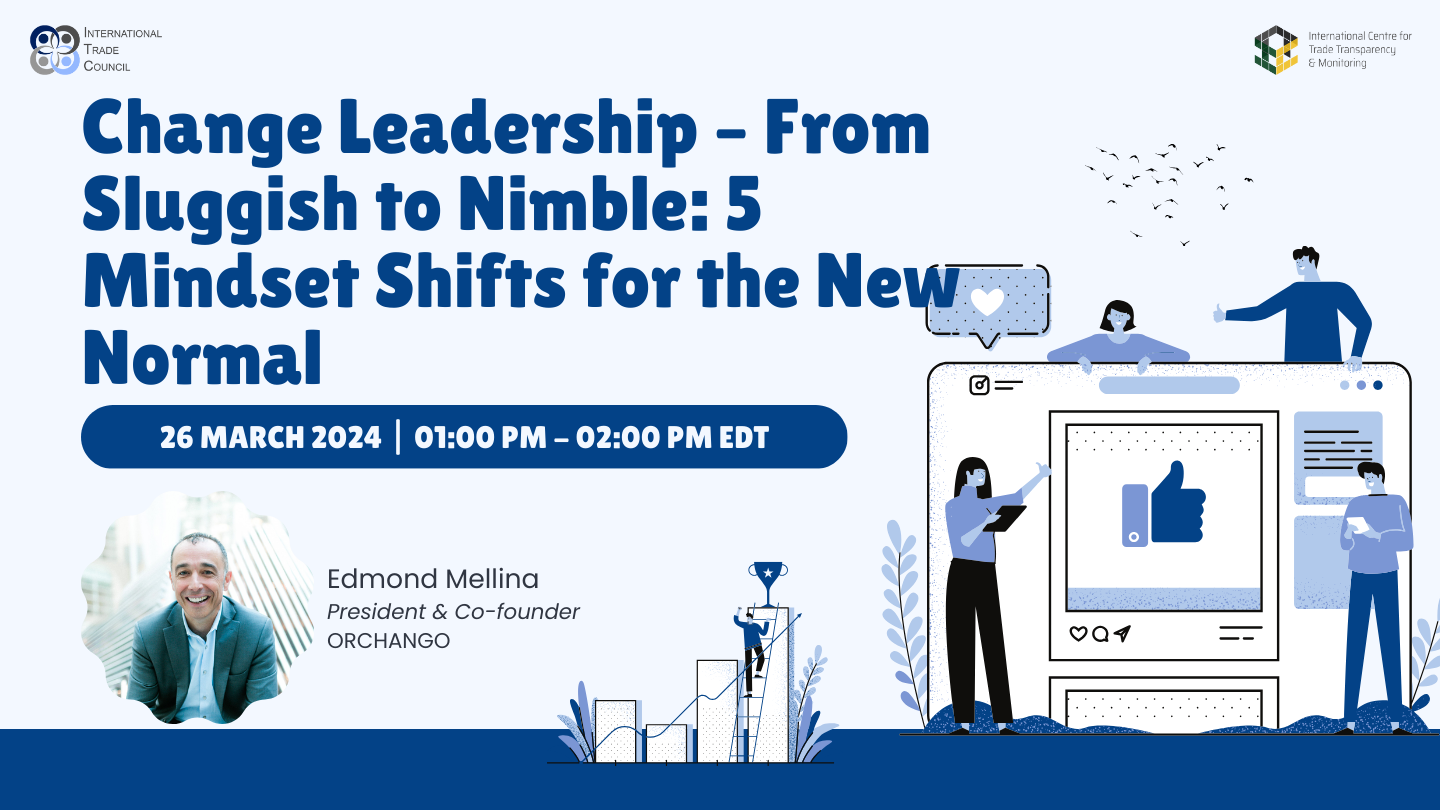How do you transform the dynamics of a team (leadership or otherwise) from dysfunctional to…
Give a change stethoscope to your managers

The critical role that direct managers play during change – both upstream and downstream – cannot be overemphasized. They represent the real keystone of organizational change. However, managers have no time, nor need, for the kind of tools favored by internal change consultants and project teams. What do they really need then? Three things: a very concise overview of your model; stethoscope-like tools; and better influence and “light-politics” skills.
Article first written for the People + Strategy blog of HRPS (USA); and subsequently featured on SmartBrief, a content aggregator which selects “only the most important industry developments from more than 10,000 major media outlets, regional newspapers, trade publications and blogs”. The Strategic Capability Network (Canada) also published the article on its blog.
Recommended reading for corporate directors + senior executives:Change management has changed: BOARDS MUST TOO
Keep the detailed roadmaps for your internal consultants and project teams
Most organizations have selected a change management model as their standard process. It usually comes with a neat collection of templates and checklists for each phase of the model. The most comprehensive manual I have seen had no less than 1,000 pages!
Thorough roadmaps are a really good resource for two specific but relatively small groups: the change experts / consultants in support functions (HR and IT primarily); and the project teams working on large change initiatives.
Remember: direct managers are the real keystone
However, these two groups are not as important as the direct managers of the employees impacted by change. As I discussed in an earlier post (“A Change-Capable Organization That Moves With Strategy“), change is a game of proximity.
Therefore, the critical role that local leaders play during change – both upstream and downstream – cannot be overemphasized. They (not senior executives, change experts or project teams) represent the true keystone of organizational change.
Note: in its latest Executive Guidance publication (“Boosting Corporate Performance During Change Initiatives”), CEB touches on this issue of proximity and discusses some of the local leaders’ roles. The paper gives good examples of how change-driving executives and project teams should work with direct managers on re-establishing employees’ capability to perform in the new environment. It is a good read.
So what is it that direct managers need the most in order to fulfill their “keystone” duties? Our research and experience tell us they need three specific things.
First, a brief overview of the process
There is no point in overwhelming busy leaders with a collection of step-by-step templates. They have no time, nor real need, for that. Hence the manual will end up collecting dust on a shelve or hard drive.
However, it is important to provide direct managers with a brief overview of the phases in your organization’s standard change model. The key word here is brief: think about something as concise as Kotter’s classic 8-steps, with maybe a short paragraph to describe each phase. That’s it.
The main objective is to help local leaders, internal change consultants and members of the change teams collaborate more effectively by using the same overall process.
Second, stethoscope-like tools
Invented in 1816, the stethoscope was further developed during the first half of the 19th century. But since then, the tool has only been moderately refined. Yet, despite the advent of high-tech and portable monitoring devices (such as point-of-care ultrasound machines), doctors around the world continue to walk around with their good old stethoscope hanging around their necks. Why is that?
When we ask the question to leaders participating in our workshops, the first response we usually get is: “Because they want to show off!” There is probably some truth in this.
But the stethoscope is more than a status symbol. Doctors use their stethoscope all the time because:
- It is always readily available as they go about their work, just there around their necks;
- It is simple to use yet provides a good read of the patient’s situation;
- Armed with these insights, doctors can quickly decide what has to be done and get going with it.
You should provide change leaders with a very small set of tools that have similar characteristics, that is:
- Readily available – Easy for busy leaders to remember, so that they are always there in the back of their minds as they interact with people;
- Simple yet effective – Designed to quickly assess (think “on the fly”) the levels of resistance or commitment of the groups impacted and, as importantly, the reasons behind.
- Catalyst for action – Enabling leaders to confidently decide, at any time throughout the transformation, what actions are required to drive the campaign and strengthen internalization of change.
Look at the various tools in your organization’s change model and pass them through the above “acid-test”. The very few that meets all three conditions should be the tools you give to managers.
[Note from the editor: if you don’t like what you end up with, then contact us; we’ve already done this acid-test work with our orginal methodology and the resulting ORCHANGO Method™ is super nimble – because our original approach was already stethoscope-like in the first place.]
At ORCHANGO, one of the tools we use and teach was known originally as The Pyramid of Change™. I started developing the Pyramid during my former career, as I was leading change and innovation internally. Although I liked the stethoscope-like simplicity of baseline tools such as the classic “Ready, Willing, Able” model, I found they all had limitations. Hence I started mixing and matching some of their elements, added new ones and tested the resulting tools in the real world. My goal was to find the simplest yet most effective tool for the entire change journey to listen, assess, act and monitor – like a stethoscope. After a few years of trial and error, the Pyramid was born. Later, we redesigned our original pyramidal model: it now looks like an actual stethoscope; and of course we call it The Change Stethoscope™. The tool points leaders to what we found through our research and experience were the five necessary and sufficient conditions to succeed with change.
Armed with their stethoscope-like tools, leaders can fulfil their critical “keystone” role in collaboration with executives, internal consultants and project team members (the last two groups relying on their more comprehensive and detailed change toolkit).
Third, better influence and “light-politics” skills
I will illustrate this point through a story. A couple of weeks ago I got a call from Sheila (not her real name), a contact of mine who works as a mid-level innovation leader for a large organization. Sheila joined the company six months ago and she was having second thoughts about her decision. Hence the call.
We started to chat about the challenges she is facing. Sheila’s struggle is a classic one: good innovative ideas but lack of momentum at the executive level; conflicting personal agendas; limited direct influence as a middle manager; etc.
As Sheila answered my questions, it became clear to me that her situation was actually not that bad: frequent one-one-one meetings with the CEO who champions the innovation agenda; a direct boss who has good influence in the executive suite; an approach to innovation that is designed to gradually develop buy-in; and more.
But like many change leaders in her position, Sheila needs to recognize the importance of working through the politics of change. That includes leveraging other people’s influence. Furthermore, she needs the necessary skills and techniques to do it effectively.
I need to clarify something though. In another post (Bad for Business: Managers Playing Dark Politics), I used the analogy of the Force in George Lucas’ Star Wars universe to made the distinction between “dark” and “light” politics. The former is about playing politics for personal gains. The intent of the latter is first and foremost the good of the organization, not personal benefits.
Engaging in light politics is not only laudable, but also critical to succeed as change leader.
Sheila is not unique. Most managers are not engaging nearly enough in the light side of politics when leading change; or they are not effective. They need increased awareness; better skills; and a few proven techniques.
We found the best way to help managers develop this competency is to immerse them in a vivid simulation that mirror the obstacles, internal politics and twists of the real world (at ORCHANGO, we use a board game we developed specially for that purpose).
You should also create opportunities for change leaders to support and learn from each other’s. Finally, your internal change consultants could help managers with the light side of politics by acting as “sounding boards” or coaches.
Above all, remember that direct (i.e. local) managers are the true keystone of change; and that they have no time, nor need, for detailed change management models. But they do need a change stethoscope.
Copyright © 2016 by ORCHANGO. All rights reserved. | Photo credit: ©Flickr.com/ NEC Corporation of America
Recommended reading for corporate directors + senior executives: Change management has changed: BOARDS MUST TOO




This Post Has 0 Comments